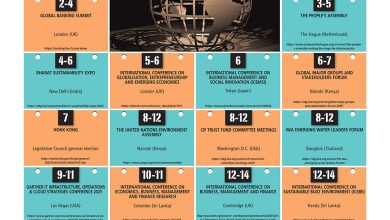COMBATING CORRUPTION
WOMEN AGAINST GRAFT
Rajika Jayatilake explains how female policy makers can help combat and reduce corruption at the national level
We live in a corrupt world that appears disinclined to end corruption. The Corruption Perceptions Index 2017 recently released by Transparency International notes that two-thirds of the world’s nations have serious corruption issues.
Meanwhile, studies by the IMF reveal that public sector corruption extracts between US$ 1.5-2 trillion annually from the global economy through graft. The real cost to the world is much more than this if one were to consider stunted economic growth, lost tax revenues and enduring poverty.
Even as they note the dire consequences, nations still turn a blind eye to and even encourage corruption by not punishing the corrupt. As Russian lawyer Alexei Navalny once observed, “everyone says corruption is everywhere but for me, it seems strange to say that and then not try to put the people guilty of that corruption away.”
Myanmar’s State Counsellor Aung San Suu Kyi once said that “it’s not power that corrupts; it is fear. Fear of losing power corrupts those who wield it and fear of the scourge of power corrupts those who are subject to it.” Meanwhile, Facebook’s Chief Operating Officer Sheryl Sandberg maintains that “men still run the world; I’m not sure it’s going so well.”
As if in response to this dilemma, the Head of the Economics Department at Virginia Tech Sudipta Sarangi and Chandan Jha of Le Moyne College in New York analysed over 125 countries, and found lower levels of corruption in states with more women parliamentarians.
Sarangi notes: “This is especially important in light of the fact that women remain underrepresented in politics in most countries including the US.”
America has never had a female president and currently, women comprise only 20 percent of lawmakers. Nevertheless, in the 2018 US midterm elections, women broke the 2012 record of 298 congressional candidates as 309 females ran for election. At local levels, women’s interest in politics is even more intense with 34,000 expressing interest in holding a seat.
The aforementioned study is extremely comprehensive and focusses on women in other occupations too. The researchers found that women noticeably impact corruption by engaging in policy-making.
Nevertheless, women are as much vulnerable to greed as men. The Executive Director of the Georgetown Institute for Women, Peace and Security at Georgetown University Melanne Verveer avers: “It’s not about having more women in politics and saying, ‘Ah that will change everything.’ It’s about changing the gender imbalance; then we could do a better job of tackling our problems.”
Indonesia’s first female Finance Minister Sri Mulyani Indrawati has made her mark as a tough reformer. She believes that women in government at grassroots level can significantly affect resource allocation. Indrawati believes that women prioritise their children’s welfare and putting food on the table while men tend to be more self-serving, and less concerned about public needs. However, she also believes it is “too simplistic” to think that women alone can clean up government at national level.
A former Iranian lawmaker, Mahnaz Afkhami believes that raising women’s voices can have a significant impact on the quality of government. She notes: “They are not part of the old boy network and they’re less willing to take for granted that this is the way things are done.”
And a study titled ‘Fairer Sex or Purity Myth?’ conducted by Rice University in Houston and Emory University in Atlanta places more importance on institutional structures factoring in women’s political gains.
For instance, even with more women in power in patriarchal autocratic regimes, there’s little measurable impact on corruption. If women have gained political power through male patronage and corruption is the norm, they are less likely to be vocal for fear of losing their jobs.
However, in transparent democratic political systems, the impact of female voices in policy-making is noticeable. When a well-functioning legal system is in place, the risk of exposure increases and voters are more likely to punish corrupt individuals at the polls by rejecting them. This explains why even with greater participation of women in politics, patriarchal societies in South Asia have high and rising levels of corruption, while more open and transparent Nordic countries have low levels of graft.
From another perspective, the social sciences include extensive content that indicates women in general may have higher ethical standards of behaviour with greater concern for the common good. If women are less likely to conduct themselves in an opportunistic manner, bringing more females into government could have beneficial effects on society as a whole.
As the US Supreme Court also recognises, there’s a need to reduce the perception of corruption as well as its actual incidence.
IMF Managing Director Christine Lagarde is of the view that “in order to fight corruption, a multifaceted approach that promotes transparency and introduces economic reforms that reduce opportunities for illicit behaviour would be wise.”








Corruption comes in many forms and therefore needs to be addressed from multiple perspectives. Analysis & interpretation can draw the line while the golden rule is to not generalise. For this reason, even among women, generalising is a challenging task. How researchers go on to place weight on these findings on women vs men can define the outlook, intention and policy making liabilities of women and thereby combating corruption. As strengths of women have been identified in favour of reducing corruption, finding out the nature of potential vulnerabilities (that are beyond control) for women to carry forward the culture of corruption and consequences is an eye-opener.
A combination of more qualitative and especially quantitative information can help move further and dig into the potential of the role of women in reducing corruption. It has also been proved in other occupations, what sort of and what level of noticeable impact may be visible when more roles are created for women. It would also be interesting to note the impact & the relationship between participation of women and corruption level where details are more specific. For instance, in a New York analysis, the amount of USD billions or trillions saved (which would otherwise have been misused), and perhaps the drop in corruption level, say by a rating or a score for ease of identification, would further enable working out many reasonings from this comprehensive study. After all, women are human too and temptation & power are the culprits.
There is no end to this cancer and there never will be. It has spread too far!